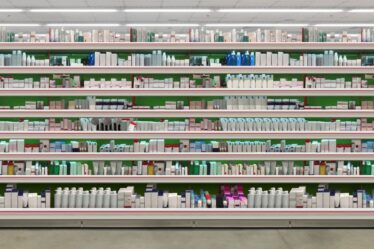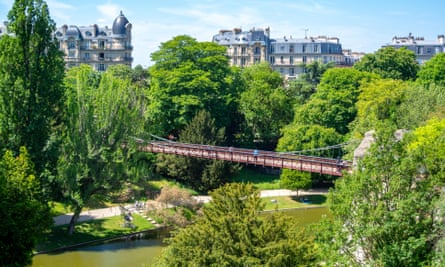
Gustave Eiffel, who died 100 years ago today, is best known for Paris’s most famous landmark, the tower that bears his name. But over a long and prolific career, the Dijon-born civil engineer also built dams, bridges and lighthouses as far afield as Russia, Senegal, Vietnam and Brazil. He worked on an early attempt at building a Panama canal, and while there was charged with misuse of funds and imprisoned (though later acquitted).
Around Paris itself, Eiffel’s legacy extends to many surviving structures and artworks. And while none is as stunning as the tower, they show off the sheer, giddy breadth of Eiffel’s genius and impact. Here are some to look out for in the capital.
Eiffel made his reputation by designing bridges, including the handsome footbridge in the 19th arrondissement’s tree-rich Parc des Buttes-Chaumont. Crossing a lake to the Île du Belvedere with its Roman temple folly, his slender iron suspension footbridge is 65 metres long and painted a dark burgundy. Unfortunately the bridge itself, plus the folly, are likely to be closed until 2025 as work to stabilise the island takes place. It can be viewed from below, however, and there’s a smaller, equally pretty Eiffel overpass close by – a dark green former road bridge just inside the park’s western entrance.
Metro: Buttes Chaumont or Botzaris. Free
Passerelle de l’Avre
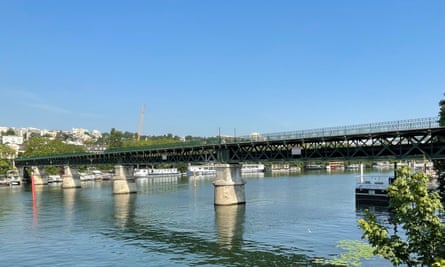
The 24-metre, lamp-post-lined Passerelle de l’Avre cycle path and footbridge runs above an aqueduct originally built to carry water to central Paris. It was designed by Eiffel and Fulgence Bienvenüe, known as the father of the Paris Metro, and inaugurated in 1893. Marking Paris’s most westerly point, it crosses the Seine from the Bois de Boulogne park and affords fine views of the skyscrapers of La Defense to the north, and, aptly, the Eiffel Tower. The riverside footpath that leads there from Pont de Saint-Cloud metro station is pleasantly tree-lined and passes numerous houseboats.
Metro: Boulogne-Pont de Saint-Cloud. Free
Notre-Dame-des-Champs church
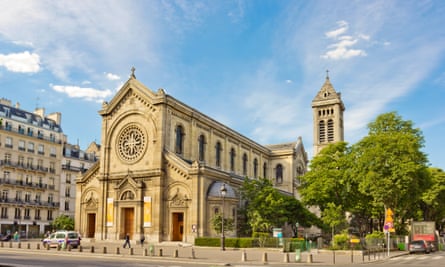
Eiffel’s company supplied the metal framework for several impressive buildings, including those underpinning the Palais Galliera fashion museum, department store La Samaritaine and the former Calmann-Lévy printing works, which is Le Shack Paris, a restaurant, club and coworking space. He also helped with the construction of Notre-Dame-des-Champs between 1867 and 1876. This elegant church on Boulevard du Montparnasse in the sixth arrondissement, south of the Seine is framed by classic Haussman buildingsand replaced a Benedictine priory destroyed during the French Revolution. Eiffel’s iron frame meant the building could be higher than most churches of the era, with more space and larger windows.
Metro: Vavin. Free
Statue of Liberty replica
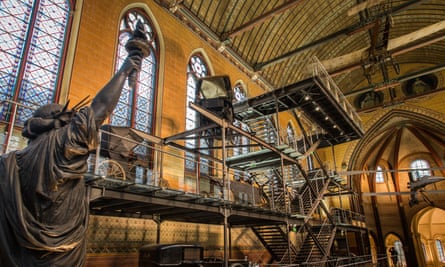
Eiffel played a key role in the building of New York’s State of Liberty. Its sculptor, Frédéric Auguste Bartholdi, needed help with the internal structure; Eiffel designed a special flexible four-legged pylon able to resist wind stress, and this became the core of the statue. The components were built at Eiffel’s workshops in Paris before being shipped to New York. There’s a timber, plaster and iron replica, a sixteenth of the original’s size, in the sprawling Musée des Arts et Métiers on rue Saint-Martin, plus photographs and related objects donated by Bartholdi’s widow.
Metro: Arts et Métiers. Entry €12
Paradis Latin
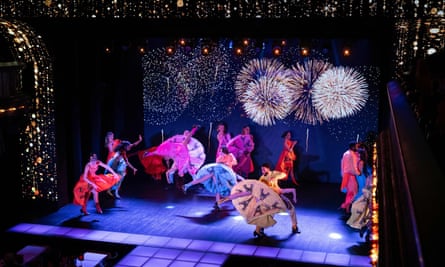
Yet another Eiffel frame anchors Paris’s oldest cabaret theatre. Easily missed on a sidestreet north of the Jardin des Plantes, Paradis Latin was originally built on the orders of Napoleon Bonaparte, in 1802. After the Franco-Prussian war left it in ruins, Eiffel helped rebuild the theatre ahead of the 1889 Paris Exhibition. He embedded metal columns in the remains of Paris’s ancient city wall, which allowed for a ceiling of cathedral-like height. This high roof space allows for shows such as L’Oiseau Paradis, which fuses aerial acrobatics, burlesque and comic elements. Its restaurant is overseen by triple Michelin-starred chef Guy Savoy.
Metro: Cardinal Lemoine or Jussieu. Evening show and drinks from €90pp
Eiffel bust and exhibition
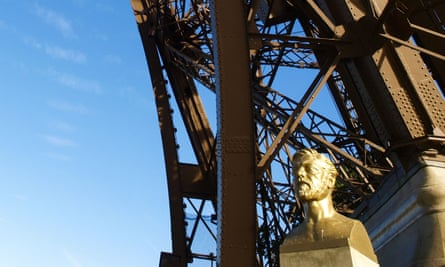
The 1889 Exhibition’s crowning glory was, of course, the Eiffel Tower. Despite the fanfare, it was scheduled for demolition after 20 years, but earned a stay of execution thanks to the usefulness of scientific apparatus installed by Eiffel. Today, almost 7 million people visit annually, with lengthy queues forming early each morning. There’s a bronze bust of Eiffel by Antoine Bourdelle beside the northern pillar and, until 7 January, a special centenary exhibition about the monument’s creation, Eiffel – Higher and Higher, on the esplanade. There are also fantastic tower views from Metro Line 6 train as they cross the Seine over Pont de Bir-Hakeim, and almost all 38 bedrooms at Hotel Beauregard, a short walk south afford fine views of it.
Metro: Bir-Hakeim. Entry from €11.30
Aérodynamique Eiffel wind tunnel

Eiffel added a wind tunnel to the base of the tower in 1909, to allow engineers to simulate the way gales affected planes and cars. It was very noisy, however, and was later banished to Eiffel’s research base, the Aérodynamique Eiffel laboratory, in the 16th arrondissement across the river, where it is still used today. Eiffel focused on meteorology and aerodynamics after retiring from engineering, building weather stations and producing prototype planes. The lab is usually open to members of the public only during the annual European Heritage Days (the next is 21-22 September 2024).
Metro: Exelmans
Eiffel’s tomb
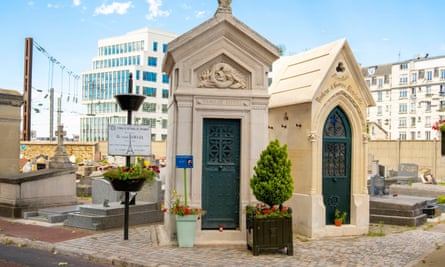
Gustav Eiffel was buried in the family tomb at Levallois-Perret cemetery, in the suburb of the same name north-west of the city. His grave faces a different direction from the rest of the row, so as to look towards the Eiffel Tower. A 15-minute walk to the south, the site of the Eiffel et Cie workshops is now Parc Gustave-Eiffel, a lovely zigzag of greenery whose dense flowerbeds, playground and water features are framed by massive murals of the Statue of Liberty, his Garabit viaduct in the Massif Central and, bien sûr, the Eiffel Tower.
Metro: Pont de Levallois-Bécon. Free
The trip was provided by the Office de Tourisme de Paris. Hotel Beauregard, with views of the Eiffel Tower, has doubles from €107 room-only. Eurostar returns from London St Pancras to Paris cost from £78



